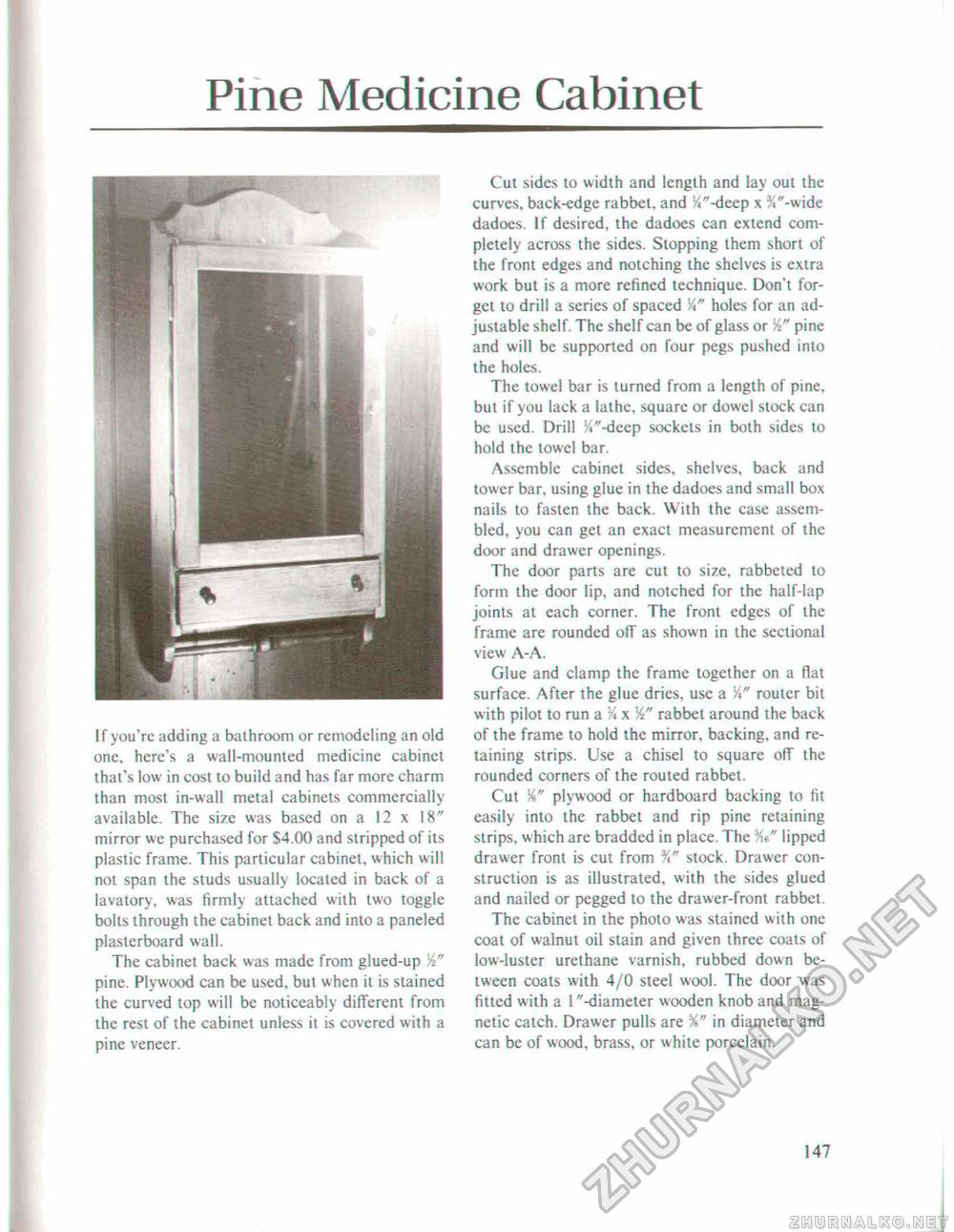Woodworker's Journal 101-Projects-for-Woodworkers, страница 154
Pine Medicine CabinetL . If you're adding a bathroom or remodeling an old one, here's a wall-mounted medicine cabinet that's low in cost to build and has far more charm than most in-wall metal cabinets commercially available. The size was based on a 12 x 18" mirror we purchased for S4.00 and stripped of its plastic frame. This particular cabinet, which will not span the studs usually located in back of a lavatory, was firmly attached with two toggle bolts through the cabinet back and into a paneled plasterboard wall. The cabinet back was made from glued-up W pine. Plywood can be used, but when it is stained the curved top will be noticeably different from the rest of the cabinet unless it is covered with a pine veneer. Cut sides to width and length and lay out the curves, back-edge rabbet, and %"-deep x %"-wide dadoes. If desired, the dadoes can extend completely across the sides. Stopping them short of the front edges and notching the shelves is extra work but is a more refined technique. Don't forget to drill a series of spaced Vi" holes for an adjustable shelf. The shelf can be of glass or Ik" pine and will be supported on four pegs pushed into the holes. The towel bar is turned from a length of pine, but if you lack a lathe, square or dowel stock can be used. Drill %"-deep sockets in both sides to hold the towel bar. Assemble cabinct sides, shelves, back and tower bar. using glue in the dadoes and small box nails to fasten the back. With the case assembled, you can get an exact measurement of the door and drawer openings. The door parts are cut to size, rabbeted to form the door lip, and notched for the half-lap joints at each corner. The front edges of the frame are rounded off as shown in the sectional view A-A. Glue and clamp the frame together on a flat surface. After the glue dries, use a 'A" router bit with pilot to run a %x V/' rabbet around the back of the frame to hold the mirror, backing, and retaining strips. Use a chisel to square off the rounded corners of the routed rabbet. Cut %" plywood or hardboard backing to fit easily into the rabbet and rip pine retaining strips, which are bradded in place. The ~%s" lipped drawer front is cut from %" stock. Drawer construction is as illustrated, with the sides glued and nailed or pegged to the drawer-front rabbet. The cabinet in the photo was stained with one coat of walnut oil stain and given three coats of low-luster urethane varnish, rubbed down between coats with 4/0 steel wool. The door was fitted with a 1 "-diameter wooden knob and magnetic catch. Drawer pulls are %" in diameter and can be of wood, brass, or white porcelain. 147 |








